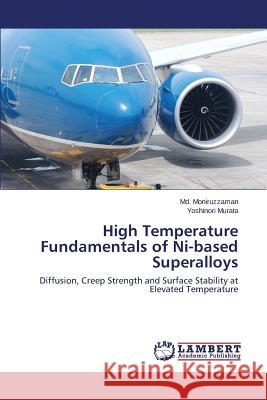High Temperature Fundamentals of Ni-based Superalloys » książka
High Temperature Fundamentals of Ni-based Superalloys
ISBN-13: 9783659684692 / Angielski / Miękka / 2015 / 124 str.
Over the last 50 years, temperature capability of Ni-based superalloys has been improved as a means to improving thermal efficiencies in aeroengines and power stations. Creep strength is the most important property for gas turbine as the rafted structure is collapsed in the later stage causing unexpected deterioration of strength. Diffusion of elements is important for understanding the high temperature processes including homogenization and precipitation of the phases. Alloys with the Re/Al ratio up to 0.1 shows satisfactory oxidation resistance but that greater than 0.1 exhibits poor performance at 1373 K. Rafting is caused by the strain energy resulting from / coherent interface. Furthermore, creep strain rate, instantaneous strain and time of starting the interfacial transition from coherent state to semi-coherent state decide substantially the morphology in the later stage of creep. Magnitude of the interdiffusion coefficients is found in the descending order of Ru, V, Mo, Ti, Nb, Re and Ta at all temperatures ranging from 1423 to 1573 K. The analysis should contribute in the understanding of design Ni-based superalloys with satisfactory high temperature properties."
Over the last 50 years, temperature capability of Ni-based superalloys has been improved as a means to improving thermal efficiencies in aeroengines and power stations. Creep strength is the most important property for gas turbine as the rafted structure is collapsed in the later stage causing unexpected deterioration of strength. Diffusion of elements is important for understanding the high temperature processes including homogenization and precipitation of the phases. Alloys with the Re/Al ratio up to 0.1 shows satisfactory oxidation resistance but that greater than 0.1 exhibits poor performance at 1373 K. Rafting is caused by the strain energy resulting from γ/γ′ coherent interface. Furthermore, creep strain rate, instantaneous strain and time of starting the interfacial transition from coherent state to semi-coherent state decide substantially the morphology in the later stage of creep. Magnitude of the interdiffusion coefficients is found in the descending order of Ru, V, Mo, Ti, Nb, Re and Ta at all temperatures ranging from 1423 to 1573 K. The analysis should contribute in the understanding of design Ni-based superalloys with satisfactory high temperature properties.











